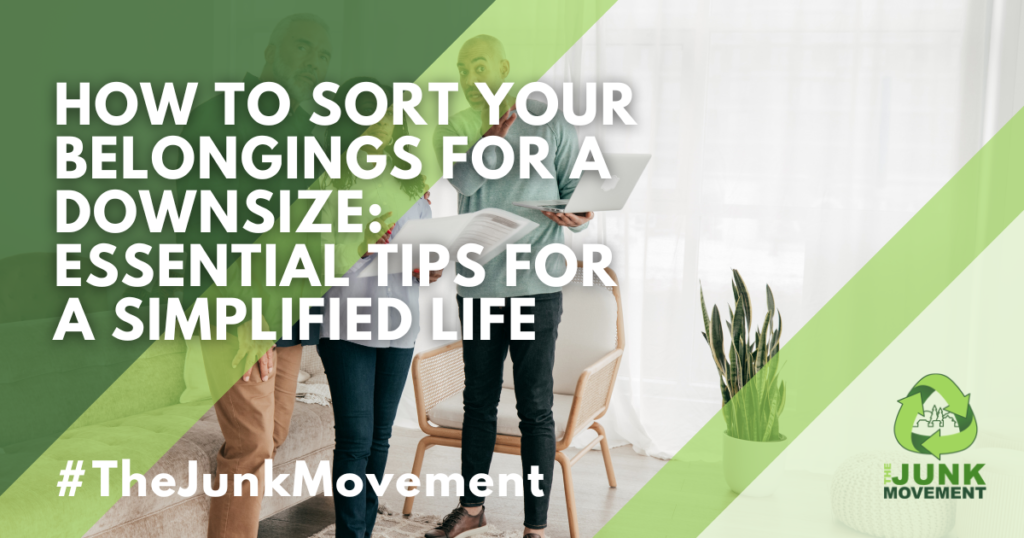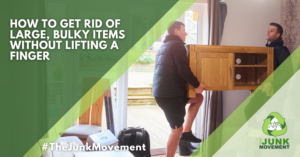Downsizing your home can be a liberating experience, offering the opportunity to declutter and simplify your life. Whether you’re moving to a smaller space, embracing a minimalist lifestyle, or simply looking to reduce clutter, sorting through your belongings can be a daunting task. This guide will provide you with practical tips and a step-by-step approach to help you efficiently sort your belongings for a downsize.
Start with a Plan: The Key to Effective Downsizing
The first step in downsizing is to create a plan. Start by assessing your new living space to understand the amount of storage and living area available. Make a list of essential items you need to keep and prioritize these items over others. Set realistic goals and deadlines for sorting through each room, and consider enlisting the help of family members or friends to make the process more manageable.
Declutter One Room at a Time
Tackling the entire house at once can be overwhelming, so it’s best to focus on one room at a time. Begin with the rooms that are used the least, such as guest rooms, basements, or storage areas. These spaces often contain items that are easier to part with. Working systematically from room to room helps maintain organization and prevents burnout.
Sort Items into Categories
As you go through each room, sort your belongings into categories. Use boxes or bins labeled “Keep,” “Donate,” “Sell,” and “Discard.” This method will help you make quick decisions about each item and keep the process organized.
- Keep: Items you use regularly, have sentimental value, or are necessary for your new living situation.
- Donate: Items in good condition that you no longer need but could benefit others.
- Sell: Valuable items that could be sold for extra cash.
- Discard: Items that are broken, worn out, or no longer usable.
Evaluate Each Item’s Necessity
When deciding whether to keep an item, ask yourself a few key questions:
- Have I used this item in the past year?
- Does this item bring me joy or hold sentimental value?
- Is this item essential for my new living space?
If the answer is no to any of these questions, it’s likely time to let go of the item. Be honest with yourself about the necessity and value of each possession.
Manage Sentimental Items
Sentimental items can be the most challenging to part with. While it’s important to keep items that hold significant emotional value, consider whether all sentimental items need to be kept. For instance, you might keep a few meaningful photographs instead of entire photo albums. Digitalizing photos and documents can help preserve memories without taking up physical space.
Minimize Duplicates
As you sort through your belongings, you’ll likely find that you have duplicates of many items. This is common with kitchen gadgets, tools, and linens. Choose the best or most frequently used version of each item and let go of the rest. Reducing duplicates can significantly decrease the number of items you need to move and store.
Utilize Storage Solutions
For items you decide to keep, consider utilizing efficient storage solutions to maximize space in your new home. Invest in multi-functional furniture, such as ottomans with storage compartments or beds with built-in drawers. Use vertical space with shelving units and hanging organizers to keep your belongings tidy and accessible.
Plan a Garage Sale
Hosting a garage sale is an excellent way to sell items you no longer need while earning some extra money. Advertise your sale online and in your local community to attract more buyers. Price items reasonably and be willing to negotiate. A successful garage sale can help you declutter and reduce the number of items you need to move.
Donate to Charity
Items that are in good condition but not worth selling can be donated to charity. Many organizations accept clothing, furniture, kitchenware, and other household items. Donating not only helps you declutter but also benefits those in need. Be sure to get a receipt for tax purposes if applicable.
Properly Dispose of Unwanted Items
For items that cannot be sold or donated, proper disposal is essential. Check with your local waste management services for guidelines on disposing of large items, electronics, and hazardous materials. Recycling centers can accept items like batteries, old electronics, and certain types of plastics. Ensuring that items are disposed of responsibly is important for environmental sustainability.
Involve Family Members
Downsizing can be a family affair. Involve your family members in the process by encouraging them to sort through their own belongings. This is especially important for children, as it teaches them the value of organization and the importance of letting go of unnecessary items. Collaborating with family can make the process more enjoyable and efficient.
Take Breaks and Stay Positive
Sorting through your belongings for a downsize can be emotionally and physically draining. Remember to take breaks and give yourself time to rest. Stay positive and focused on the benefits of downsizing, such as reduced clutter, a simplified lifestyle, and a fresh start in your new space. Celebrate your progress along the way to keep motivation high.
Conclusion
Downsizing your home and sorting through your belongings doesn’t have to be overwhelming. By starting with a plan, working systematically through each room, and making thoughtful decisions about each item, you can efficiently prepare for your move. Utilize the tips provided in this guide to simplify the process and make your transition to a smaller space as smooth as possible. Remember, The Junk Movement is here to assist with any cleanup or removal needs during your downsizing journey. Embrace the opportunity to create a more organized and stress-free living environment.




